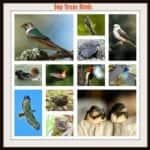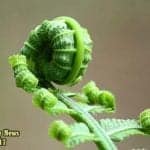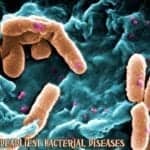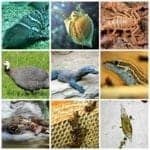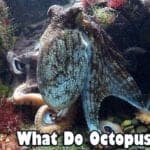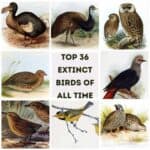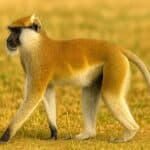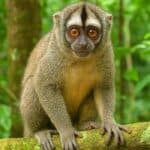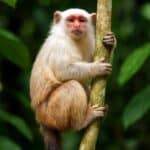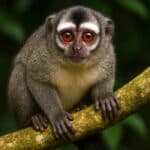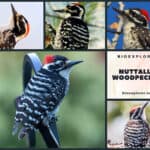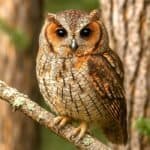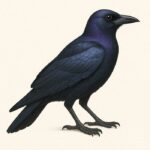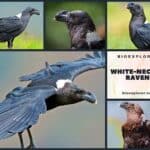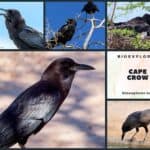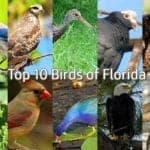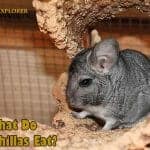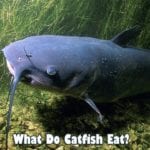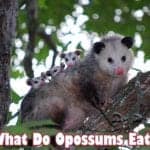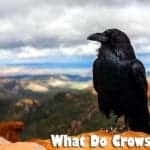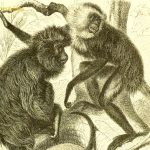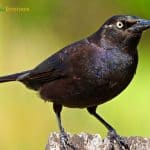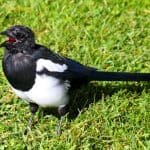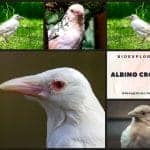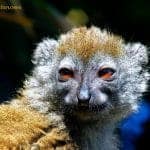top - search results
If you're not happy with the results, please do another search
Top 101 Elephant Facts
Elephants are the largest and heaviest animals on the planet Earth. Here are the top 101 elephant facts categorized: anatomy facts, family facts, diet facts, social life facts, 'sad-but-true' facts, and some unusual fun facts.
Explore Top 14 Texas Birds With Their Identifications
Because of its geographic location and extra diverse regions, Texas is blessed with rich bird wildlife. It is even considered as the most diverse bird state in the United States. Here is the list of some of the most famous Texas birds that are native to Texas.
Top 7 Pros and Cons of Cloning
Cloning creates a copy of a single cell or an entire living organism. Each clone bears the same sets of genetic material in the nucleus of every cell. On this page, learn more top 7 pros and cons of cloning and decide whether this scientific endeavor is worth the risks.
Top 10 Evolution News In 2017
Evolution is a variation in the heritable features of biological groups over succeeding generations (Darwinism). Evolutionary processes contribute advancement in biodiversity at every level of biological organization, including the levels of species, individual organisms, and molecules. In this article, we will go over top 10 evolution news in 2017.
Top 10 Biotechnology News In 2017
Biotechnology is the branch of biology that harnesses cellular and biomolecular processes to develop technologies and products that help enrich our lives and the well-being of our planet. This article explored the top 10 biotechnology news in 2017.
Top 11 Microbiology News In 2017
Microbiology is the branch of biology that studies microorganisms (e.g.,bacteria) which includes unicellular (single cell), multi-cellular (cell colony), and acellular (lacking cells). In this article, we'll glance over all top microbiology news in 2017, which includes current news, events, and advances in microbiology.
Top 12 Immunology News In 2017
Immunology is one of the sub-divisions of biology (to be precise biomedical science) that encompasses the study of immune system in all living organisms. In this page, learn biological advancements and research news in the field of immunology and related top stories in 2017.
Top 12 Genetics News In 2017
The year 2017 has seen ground-breaking advancements in the field of Genetics. Genetics is the biological study of genes, genetic variation, mutations, and heredity in living organisms. In this article, we will explore top 12 genetics news in 2017.
Top 10 Ecology News in 2017
Ecology is the biological study of interactions among organisms and their ecosystems/environments. Here are the top 11 ecology news, ecology-related research, studies, and technology advancements in 2017.
Top 12 Cell Biology News in 2017
Cell biology is the branch of biology that studies the cell structure, its organization of the organelles, their metabolic processes, and physiological properties. In this article, we will focus on top 12 cell biology news, innovations, breakthroughs and research studies in 2017.
Top 12 Botany News For 2017
Botany is the scientific study of plants, their anatomy, structure, genetics, ecology, distribution, and taxonomy. Every year, there are many innovations, breakthrough discoveries, and technology advancements in the world of plants. Let's explore the top 12 botany news in 2017.
Top 14 Biochemistry News, Innovations & Breakthroughs In 2017
Biochemistry News in 2017: Biochemistry is also known as biological chemistry. It is the study of chemical processes within the living organisms. In this article, we will explore all breakthroughs, innovations and Nobel prize winners in Biochemistry for the year 2017.
Top 27 Types of Monkeys Live In Rainforest
Rainforests are biomes that have a rich flora and fauna. Animal species diversity is highest in the rainforests than anywhere else on earth. This article discusses 27 rainforest monkeys that are found in different rainforest regions of the world.
Top 15 Anatomy & Physiology News In Innovations & Breakthroughs For 2017
There were several advancements, breakthroughs, and innovations in several fields of biology in 2017. In this article, let's glance over the top 15 anatomy and physiology related breakthroughs in 2017.
Top 23 Bioethical Issues In Biological Advancements
Bioethics refers to the study and evaluation of decisions made in scientific research and medicine that affect the health and lives of people, society, and the environment. It is concerned with determining the rightness or wrongness of scientific discoveries. Learn about the top 23 Bioethical issues.
Top 14 Most Infectious and Deadliest Diseases Caused By Bacteria
Here are the world’s top 14 most infectious and deadliest bacterial diseases/infections that even some of the strongest present-day antibiotics can’t kill.
Top 7 Tropical Rainforest Animal Adaptations
The competition for food and resources in tropical rainforests is intense. Explore the 7 tropical rainforest animal adaptations that allow them to survive.
Top 6 Major Threats To Biodiversity
Biodiversity refers to the variety of life forms on Earth. Here, we explore 6 of the biggest threats to biodiversity and how do each of them contribute to its loss.
Top 10 Spectacular Asexual Reproduction In Animals
What if you could reproduce without a mate? There are animals that surely can! In this article, check out the top 10 most spectacular asexual organisms.
Top 5 Colleges For Zoology Graduate Programs
Zoology is a branch of biology that deals with the study of animals. Here are the top 5 zoology degree offering universities in US, qualifications, & salary.
What Do Octopuses Eat?
Scientists have discovered over 300 species of octopus. Learn what do octopuses eat & diets include birds, shrimp, lobsters, sharks, clam, and fish.
Top 36 Extinct Birds From Millions To Zero!
Discover the 35 most famous extinct birds and learn about their stories on what caused their decline and eventually mass extinction from this planet earth.
Top 11 Famous Hawaiian Birds
Hawaii is a home to a tremendous diversity of a wide array of birds. Here are 11 of the most famous Hawaiian Birds with their biological names and facts.
Hematopoietic Stem Cells (HSCs)
Blood Cells are usually short-lived. Hematopoietic Stem Cells in the body are present to restore them continuously. See its origin, properties & functions.
Top 10 Best Marine Biology Colleges
The top 10 Best Marine Biology Colleges & Universities in North America offer excellent marine science programs in state-of-the-art facilities.
Southern Patas Monkey
The Southern Patas Monkey (Erythrocebus baumstarki), native to Tanzania, is a critically endangered primate known for its speed, elusive nature, and striking coloration. Once widespread, its population now teeters between 100–200 individuals due to habitat loss and human threats. Inhabiting open acacia woodlands, these ground-dwelling monkeys play a vital ecological role in seed dispersal and insect control. Conservation efforts are urgently needed to protect this rare species and restore its shrinking habitat range.
Gray-handed Night Monkey
The gray-handed night monkey (Aotus griseimembra) is a small, nocturnal primate native to Colombia, Venezuela, and Panama. Known for its large owl-like eyes and gray limbs, this tree-dwelling monkey thrives in rainforest canopies and plays a vital role as a seed disperser. Monogamous and family-oriented, it relies on both parents—especially the father—for infant care. Though adaptable, habitat loss, hunting, and the pet trade threaten its survival, earning it a Vulnerable status on the IUCN Red List. Conservation efforts are crucial to preserve this unique night-dweller and its forest ecosystem.
Schneider’s Marmoset
Schneider’s marmoset (Mico schneideri) is a tiny Amazonian monkey discovered only in 2021. Endemic to Brazil’s Mato Grosso forests, it lives in one of the most threatened rainforest regions. With a diet of fruits, insects, and flowers, it plays key ecological roles. Social and territorial, this marmoset breeds within tight-knit groups. Unfortunately, rampant deforestation threatens its survival. Urgent conservation is needed to protect this rare species and the rapidly vanishing habitat it calls home.
Gray-bellied Night Monkey
The gray-bellied night monkey (Aotus lemurinus) is a rare nocturnal primate found in the cloud forests of Colombia and Ecuador. Recognizable by its red eyes, gray underbelly, and woolly coat, it thrives in dense canopies where it feeds on fruits, insects, and nectar. Its nocturnal habits reduce competition and help it evade predators like owls and snakes. As both seed disperser and prey, it plays a key ecological role—yet habitat loss continues to threaten its survival.
Nuttall’s Woodpecker
Nuttall's woodpecker (Picoides nuttallii) is a small, striking bird found primarily in California and northern Baja California. It thrives in oak woodlands, riparian corridors, and even suburban areas with mature trees. Males sport a red crown patch, while both sexes show black-and-white barring that blends into tree bark. This non-migratory woodpecker feeds mainly on ants and beetles, using its strong bill and long tongue to forage under bark. Monogamous pairs raise chicks in tree cavities, and their old nests offer shelter to other wildlife, making them key contributors to healthy forest ecosystems.
Flammulated Owl
The flammulated owl (Psiloscops flammeolus) is a small, nocturnal bird native to western North America, renowned for its flame-marked plumage and soft, deep calls. Favoring mature coniferous forests, this elusive owl nests in tree cavities and feeds almost exclusively on insects like moths and beetles. Despite its broad range, it remains hard to spot due to its camouflaged appearance and secretive habits. As a key insect predator and indicator of healthy forests, the flammulated owl plays an essential role in maintaining ecological balance across its habitat.
Violet Crow
The violet crow (Corvus violaceus) is a medium-sized, glossy black bird with a distinctive purplish sheen, found only on Seram Island in Indonesia. Formerly a subspecies of the slender-billed crow, it is now recognized as a unique species. Adapted to tropical forests, plantations, and farmland, the violet crow is omnivorous and exhibits solitary or small-group foraging behavior. Its stable population and ecological role in seed dispersal and pest control make it vital to Seram’s biodiversity. With striking plumage and limited range, it captivates ornithologists and conservationists alike.
White-necked Raven
The white-necked raven is a large, intelligent bird native to the highlands of eastern and southern Africa. Recognizable by its white nape and glossy black plumage, this adaptable corvid thrives in mountainous terrain, open savannas, and even urban settings. It feeds on everything from insects and carrion to human scraps, often displaying clever foraging tactics like dropping nuts on rocks. Monogamous pairs build sturdy nests on cliffs or tall trees. As both scavenger and predator, it plays a vital ecological role while showcasing striking social and problem-solving behaviors.
Cape Crow
The Cape crow is a glossy black, intelligent bird native to eastern and southern Africa. Known for its large curved bill and deep "krrah" call, this corvid thrives in open grasslands, savannas, and farmlands. It plays a vital role in the ecosystem as both a predator and scavenger, helping control pests and recycle nutrients. Though sometimes viewed as a pest, it demonstrates advanced problem-solving, tool use, and social intelligence, making it a fascinating species among Africa’s many types of birds.
Mexican Flowers
Discover the top Mexican flowers, from marigolds to dahlias, and explore their beauty, meanings, and rich cultural ties to Mexico’s heritage.
What Do Wolves Eat?
Wolves are classified under a broad taxonomic family referred to as Canidae. Explore what do wolves eat, their diet by types, when do they eat, how much they eat and what eats them.
What Do Flamingos Eat?
Flamingoes are beautiful wading birds classified in the family Phoenicopteridae. Explore what do flamingos eat, types & what eats flamingoes.
10 Stunning Native Birds Every Florida Visitor Needs to See
Florida Birds: Because of its unique geographic location and suitable tropical climate, the state of Florida is home to some of the most awesome birds ever discovered. Here, we explore the top ten most spectacular birds of Florida, which are native to the state of Florida, from Scrub-Yay to Killdeer and much more.
What Do Monkeys Eat?
Monkeys are divided into two groups; the Old World and New World monkeys. Explore what do monkeys eat, monkeys diet by types and what eats monkeys here.
Explore The Layers Of The Rainforest
Among all biomes, tropical rainforests are considered to have the highest biodiversity. The rainforest is divided into 4 layers: the emergent layer, the canopy layer, the understory, and the forest floor. These layers host several species of tropical animals and tropical plants. Explore the layers of the rainforest here.
What Do Chinchillas Eat?
Chinchillas are attractive little rodents famed for the fluffy appearance that sets them apart from other animals. What do Chinchillas eat, diet patterns & more.
What Do Koalas Eat?
Koalas are iconic marsupials spotting black oval noses and round ears. Explore what do koalas eat, their diet plan, what eats koalas, & animal food chain.
What Do Ferrets Eat?
Ferrets are small furry mammals with long tails and a pear-shaped physique. Explore what do ferrets eat, ferrets diet by types, and what eats ferrets & more.
What Do Catfish Eat?
Catfish are unique looking fish notable for their barbells which give the impression of a cat's whiskers. Explore what do catfish eat & their diet by types.
What Do Opossums Eat?
Opossums are marsupials, endemic to the Americas. Explore what do opossums eat, opossums diet by types, what eats opossums, hunting patterns, and more.
Order Falconiformes / Falcons
Birds in Order Falconiformes are highly efficient deadly predators. A perfect prominent example of this order is Falcons. Explore the characteristics & species here.
What Do Owls Eat?
Owls are described as raptors because of their sharp claws and beaks. Explore what do owls eat, owls diet by different types, what eats owls, how often do owls eat & more.
What Do Crows Eat?
Explore what do crows eat by their types and what eats crows. Crows diet may include small mammals, fishes, amphibians, reptiles, insects, seeds, nuts, & more.
What Do Foxes Eat?
Foxes are classified under the genus Vulpes made up of about 12 existing species. Explore what do foxes eat, diet by species & what eats foxes here.
Black colobus
The black colobus, also known as satanic black colobus, is a species of Old-World monkey in the Colobus genus. The black colobus is the oldest of the 5 recognized species in the genus Colobus and is said to have diverged 3 to 4 million years ago.
What Do Groundhogs Eat?
Groundhogs are herbivores that eat a diverse diet of greens, vegetables, fruits and more. Learn everything groundhogs eat and their favorite foods.
Olive Colobus
The olive colobus (Procolobus verus), also called the Van Beneden's colobus or green colobus is a primate species in the Cercopithecidae family. It is the smallest specimen of all the Colobine monkeys. It is rarely seen in its natural habitat due to its secretive nature and cryptic coloration.
Common Grackle
The Common Grackle is a large, long-tailed blackbird with striking iridescent plumage-males shimmer with purple, green, or blue gloss, while females are duller and browner. Found across eastern North America, grackles thrive in a wide range of habitats, from wetlands and fields to suburbs and city parks. Highly social, they often gather in massive flocks outside the breeding season. Their varied diet includes insects, seeds, grains, and even small animals. Grackles are known for their harsh, rusty-gate calls, and their communal roosts can number in the millions.
Black-billed Magpie
The Black-billed Magpie is a striking, medium-sized bird with a long iridescent tail, black head and back, and bold white patches on its wings and belly. Found in western North America, it thrives in open habitats like meadows, grasslands, and near human settlements. Magpies are highly social and intelligent, often seen in noisy flocks and known for their complex social displays. They build large, domed nests and mate for life. Notably, magpies sometimes gather around deceased companions in a behavior likened to a “funeral.” Black-billed Magpies can recognize themselves in mirrors, a rare trait among birds.
Pied Crow
The Pied Crow is a striking black-and-white corvid native to sub-Saharan Africa and nearby islands. Easily recognized by its glossy black head, wings, and tail contrasted with a broad white chest and belly, it is slightly larger than the Carrion Crow and has a robust, slightly hooked bill. Highly adaptable, Pied Crows thrive in open savannas, grasslands, farmlands, and urban areas, often seen in pairs or small groups but sometimes gathering in large flocks. Exceptionally intelligent, they use tools, cache food, and mimic sounds. Their omnivorous diet includes insects, small animals, fruit, carrion, and human scraps.
Eastern White Pine
Explore the world of the Eastern White Pine, a majestic tree with a rich history and diverse uses. Learn about its characteristics, its role in the ecosystem, and how to care for it. Discover why the Eastern White Pine is more than just a tree; it's a symbol of resilience and a testament to nature's bounty.
Albino Crows
Rare genetic variants, albino crows reveal key insights into pigmentation, survival, and biodiversity despite the challenges posed by their bright white plumage that lacks the species' typical protective camouflage.
15 Outstanding Birds of Ohio
At present, Ohio has 5 distinct geographical regions from Lake & Till Plains to Appalachian Plateau and Bluegrass Region. Find 15 Best Birds of Ohio here.
Eastern Lesser Bamboo Lemur
The eastern lesser bamboo lemur (Hapalemur griseus) is a small, endangered rainforest primate found only in Madagascar. This unique species has adapted to specialize in a toxic bamboo diet other animals cannot consume. Yet habitat loss and hunting have left remaining populations highly vulnerable.
What Is Biological Magnification?
Understand biological magnification - how toxins accumulate exponentially up food chains to dangerous levels in top predators. Unpack biomagnification impacts, sources, and solutions.



